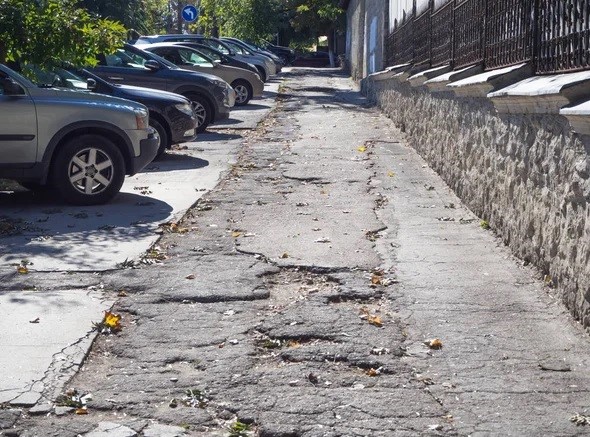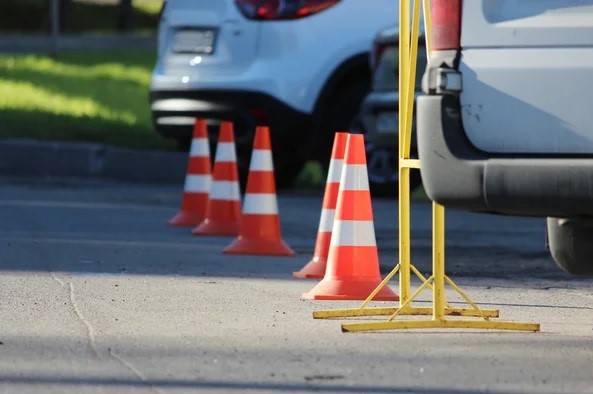Parking lots are essential assets for any commercial property, but they are often subject to a variety of pavement defects that can lead to costly repairs if not addressed promptly. Knowing the common types of parking lot pavement defects and their causes can help you maintain the longevity of your asphalt surface and ensure safety for all users. In this article, we will explore seven common types of parking lot pavement defects, their causes, effects, and effective solutions to mitigate these issues.

What Are the Common Types of Parking Lot Pavement Defects
Pavement defects are common issues that can affect the functionality and safety of asphalt surfaces. Proper pavement maintenance is crucial for preventing defects and prolonging the lifespan of parking lots and other paved areas. Below, we will detail the seven most common types of parking lot pavement defects, how they occur, and what you can do to address them.
1. Alligator Cracking (Fatigue Cracking)
Alligator cracking, also known as fatigue cracking, resembles the scales of an alligator and is a load-related structural failure. This defect typically starts as longitudinal cracking in the wheel path and evolves into interconnected cracks.
Causes:
- Weakness in the asphalt surface, base, or subgrade.
- Excessive loads and repeated traffic stress.
- Poor drainage and inadequate pavement thickness.
Effects:
- Increased risk of water infiltration.
- Accelerated pavement deterioration.
- Safety hazards for vehicles and pedestrians.
Solutions:
- Full-Depth Patch: The most effective solution is to remove the affected area and perform a full-depth asphalt patch, ensuring proper support at the base and subgrade levels.
2. Block Cracking
Block cracking is characterized by large, rectangular-shaped cracks that form due to the shrinkage of the asphalt binder. It is not related to traffic load but rather to temperature fluctuations and the aging of the asphalt surface.
Causes:
- Poor choice of asphalt binder in the mix.
- Asphalt binder’s inability to expand and contract with temperature changes.
- Dried-out asphalt or an improperly mixed asphalt layer.
Effects:
- Reduced pavement strength and durability.
- Compromised aesthetic appearance of the asphalt surface.
Solutions:
- Crack Sealing: For less severe cracks, applying sealant can prevent moisture from entering the subgrade.
- Overlay: More severe block cracking may require the removal of the cracked pavement layer and replacement with an asphalt overlay.
3. Longitudinal Cracking
Longitudinal cracks run parallel to the pavement’s centerline and are commonly found along construction joints.
Causes:
- Pavement fatigue.
- Poor joint construction or bonding between asphalt layers.
- Reflective cracking from underlying layers.
Effects:
- Allows water to penetrate the pavement, leading to further damage.
- Weakens the structural integrity of the pavement.
Solutions:
- Crack Filling: Sealing cracks less than ½ inch wide can prevent further damage.
- Overlay: Severe longitudinal cracking may require overlaying the pavement surface.
4. Transverse Cracking
Transverse cracks run perpendicular to the pavement’s centerline and are caused by thermal stresses and reflective cracking.
Causes:
- Temperature fluctuations.
- Poor construction practices.
- Reflective cracks from the underlying pavement layers.
Effects:
- Water infiltration leads to pavement failure.
- Loss of structural strength in the affected area.
Solutions:
- Crack Sealing: Sealing cracks can prevent water ingress.
- Full-Depth Patching: Severe transverse cracking may require removing the damaged pavement and replacing it.
5. Edge Cracking
Edge cracks develop along the outer edges of the pavement surface, typically within 1-2 feet from the edge.
Causes:
- Lack of support at the pavement edge.
- Poor drainage and vegetation growth.
- Heavy traffic and environmental stresses.
Effects:
- Weakens the pavement structure, leading to further cracking and damage.
- Creates potential hazards for vehicles.
Solutions:
- Improve Drainage: Fix any drainage issues and remove vegetation near the pavement edge.
- Crack Filling and Sealing: Sealing edge cracks can prevent further damage.
6. Potholes
Potholes are bowl-shaped depressions in the pavement surface that penetrate through the asphalt layer down to the base.
Causes:
- Water infiltration and freeze-thaw cycles.
- Untreated alligator cracking.
- Poor pavement maintenance.
Effects:
- Safety hazards and vehicle damage.
- Accelerated pavement deterioration.
Solutions:
- Full-Depth Replacement Patch: Remove the damaged pavement and replace it with a new asphalt layer.
7. Rutting
Rutting refers to channelized depressions in the wheel paths, often caused by a lack of structural support in the pavement layers.
Causes:
- Insufficient pavement thickness.
- Weak asphalt mix or inadequate compaction.
- Excessive loading and traffic.
Effects:
- Water accumulation, leading to further pavement damage.
- Uncomfortable driving experience and safety risks.
Solutions:
- Overlay: Minor rutting can be filled and overlaid with asphalt.
- Full-Depth Replacement: Severe rutting requires removing the affected layers and replacing them.
Importance of Proper Pavement Maintenance
Maintaining your parking lot is essential to ensure safety, extend the lifespan of your asphalt, and enhance curb appeal. Regular inspections and timely repairs can prevent minor defects from developing into more severe issues.
Benefits of Addressing Pavement Defects
- Increased Safety: Reducing hazards for vehicles and pedestrians.
- Cost Savings: Avoid costly repairs by addressing small issues early.
- Enhanced Appearance: A well-maintained parking lot improves the overall look of your property.

Get Professional Asphalt Repair and Maintenance Services
Don’t let pavement defects damage your property and endanger users. Contact Sidewalk Safety Inc. at (916) 719-6910 for expert asphalt repair and maintenance services. Our professional team is equipped to handle all types of parking lot pavement defects, ensuring a safe and long-lasting surface for your property. Call us today to schedule a consultation!
By understanding and addressing these common pavement defects, you can protect your investment and maintain a safe, attractive parking lot. For all your asphalt paving needs, trust the experts at Sidewalk Safety Inc.!

